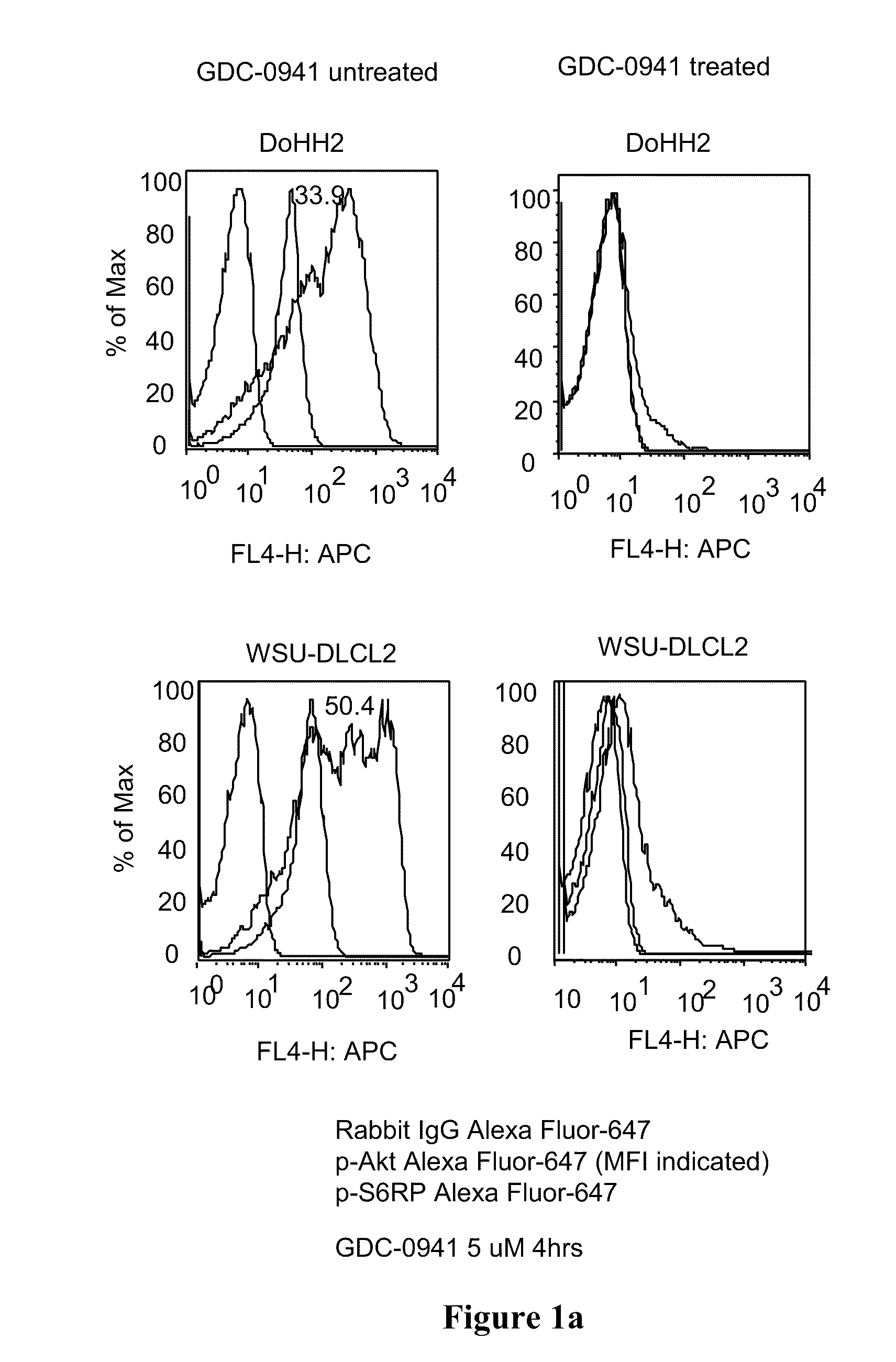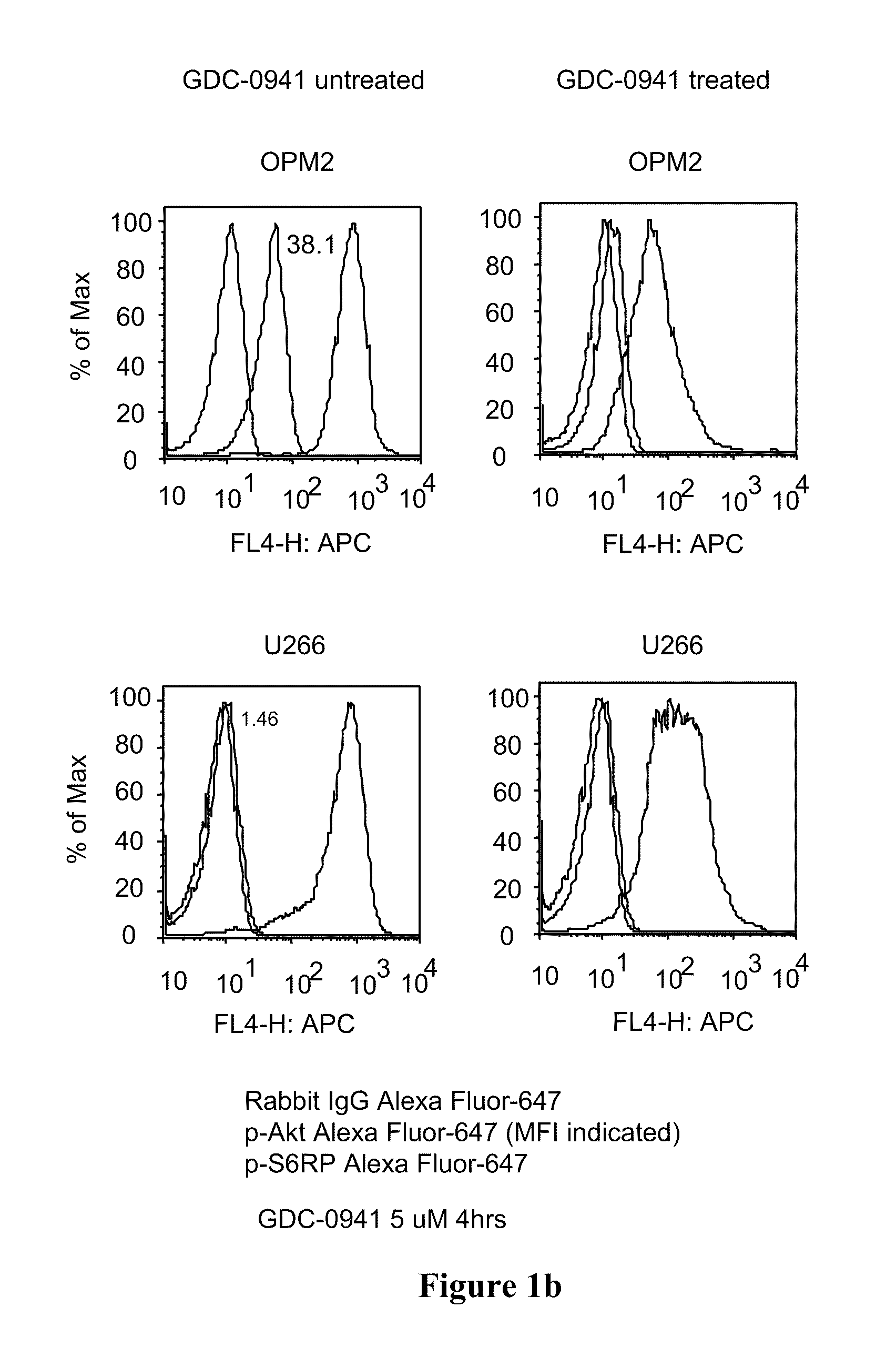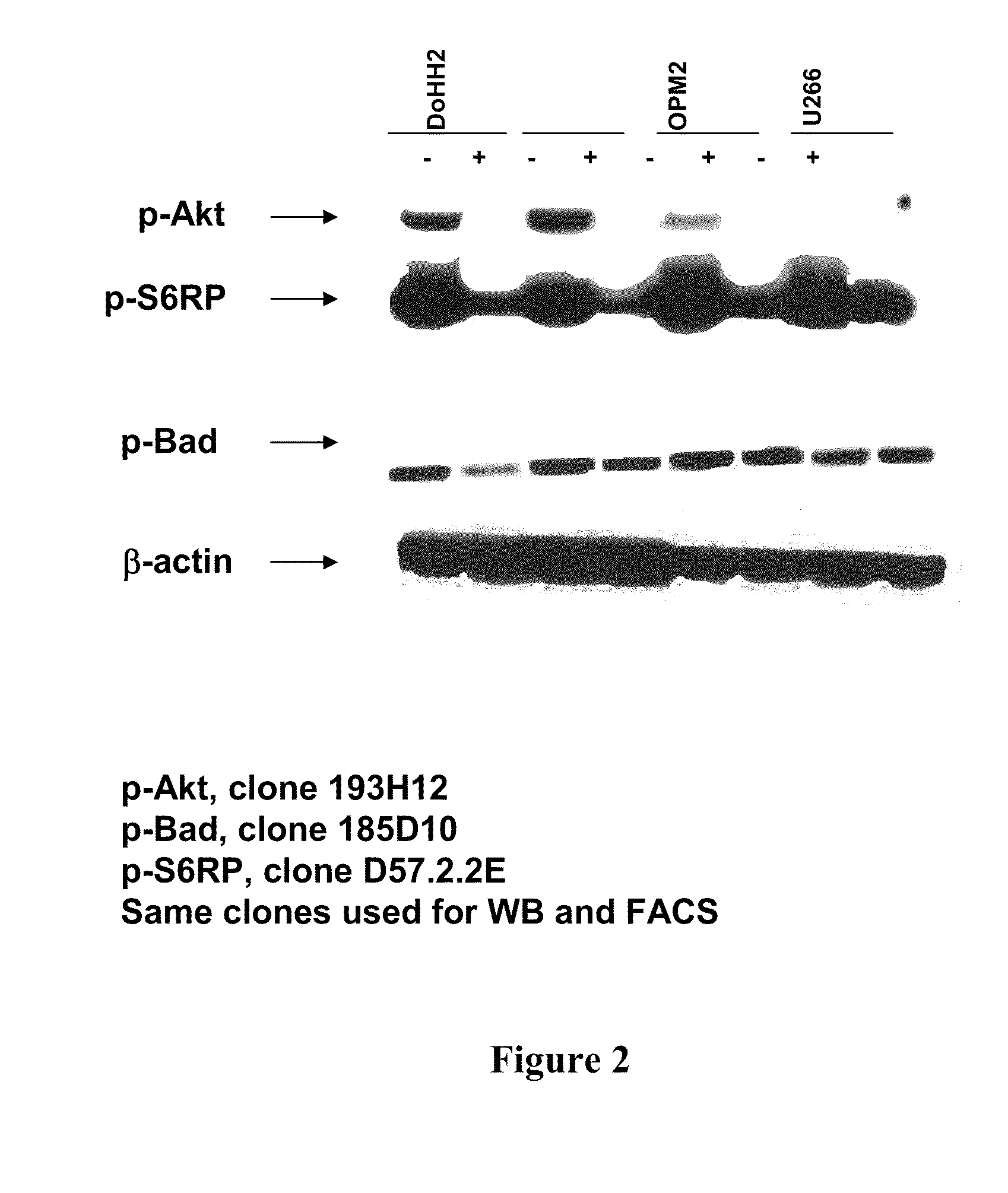Combinations of phosphoinositide 3-kinase inhibitor compounds and chemotherapeutic agents for the treatment of hematopoietic malignancies
a technology of phosphoinositide 3 and kinase inhibitors, which is applied in the field of hematopoietic malignancies, can solve the problems of limited changes in outcome, inability to treat more aggressive non-hodgkin lymphomas, and inability to achieve normal hematopoietic function, so as to inhibit the growth of hematopoietic cancer cells, inhibit the growth of tumors in mammals, and inhibit the growth of hematopoi
- Summary
- Abstract
- Description
- Claims
- Application Information
AI Technical Summary
Benefits of technology
Problems solved by technology
Method used
Image
Examples
example 1
2,4-Dichloro-thieno[3,2-d]pyrimidine 3
[0333]
[0334]A mixture of methyl 3-amino-2-thiophenecarboxylate 1 (13.48 g, 85.85 mmol) and urea (29.75 g, 5 eq.) was heated at 190° C. for 2 hours. The hot reaction mixture was poured onto sodium hydroxide solution and any insoluble material was removed by filtration. The mixture was then acidified (HCl, 2N) to yield 1H-thieno[3,2-d]pyrimidine-2,4-dione 2 as a white precipitate, which was collected by filtration and air dried (9.49 g, 66%). 1H NMR 400 MHz, d6-DMSO) 6.90 (1H, d, J=5.2 Hz), 8.10 (1H, d, J=5.2 Hz), 11.60-11.10 (2H, br s).
[0335]A mixture of 1H-thieno[3,2-d]pyrimidine-2,4-dione 2 (9.49 g, 56.49 mmol) and phosphorous oxychloride (150 mL) was heated at reflux for 6 h. The reaction mixture was then cooled and poured onto ice / water with vigorous stirring yielding a precipitate. The mixture was then filtered to yield 2,4-dichloro-thieno[3,2-d]pyrimidine 3 as a white solid (8.68 g, 75%). 1H NMR (400 MHz, CDCl3) 7.56 (1H, d, J=5.5 Hz), 8.13...
example 2
2-Chloro-4-morpholin-4-yl-thieno[3,2-d]pyrimidine 4
[0336]
[0337]A mixture of 2,4-dichloro-thieno[3,2-d]pyrimidine 3, (8.68 g, 42.34 mmol), morpholine (8.11 mL, 2.2 eq.) and MeOH (150 mL) was stirred at room temperature for 1 h. The reaction mixture was then filtered, washed with water and MeOH, to yield 2-chloro-4-morpholin-4-yl-thieno[3,2-d]pyrimidine 4 as a white solid (11.04 g, 100%). 1H NMR (400 MHz, d6-DMSO) 3.74 (4H, t, J=4.9 Hz), 3.90 (4H, t, J=4.9 Hz), 7.40 (1H, d, J=5.6 Hz), 8.30 (1H, d, J=5.6 Hz).
example 3
2-Chloro-4-morpholin-4-yl-thieno[3,2-d]pyrimidine-6-carbaldehyde 10
[0338]
[0339]To a suspension of 2-chloro-4-morpholin-4-yl-thieno[3,2-d]pyrimidine 4 (1.75 g, 6.85 mmol) in dry THF (40 mL) at −78° C. was added a 2.5M solution of n-butyllithium (nBuLi) in hexane (3.3 mL, 1.2 eq.). After stirring for 1 h, dry DMF (796 μL, 1.5 eq.) was added. The reaction mixture was stirred for 1 h at −78° C. and then warmed slowly to room temperature. After a further 2 h at room temperature the reaction mixture poured onto ice / water yielding a yellow precipitate. This was collected by filtration and air-dried to yield 2-chloro-4-morpholin-4-yl-thieno[3,2-d]pyrimidine-6-carbaldehyde 10 (1.50 g, 77%). 1H NMR (400 MHz, d6-DMSO) 3.76 (4H, t, J=4.9), 3.95 (4H, t, J=4.9), 8.28 (1H, s), 10.20 (1H, s).
PUM
 Login to View More
Login to View More Abstract
Description
Claims
Application Information
 Login to View More
Login to View More - R&D
- Intellectual Property
- Life Sciences
- Materials
- Tech Scout
- Unparalleled Data Quality
- Higher Quality Content
- 60% Fewer Hallucinations
Browse by: Latest US Patents, China's latest patents, Technical Efficacy Thesaurus, Application Domain, Technology Topic, Popular Technical Reports.
© 2025 PatSnap. All rights reserved.Legal|Privacy policy|Modern Slavery Act Transparency Statement|Sitemap|About US| Contact US: help@patsnap.com



